The effect of marine seismic surveys on the movement, abundance and community structure of demersal fish assemblages on the North West Shelf
Mark G. Meekan A E , Conrad W. Speed A , Robert D. McCauley B , Jayson M. Semmens C , Stephen J. Newman D , Rebecca Fisher A and Miles J. G. Parsons AA Australian Institute of Marine Science, Indian Ocean Marine Research Centre, Level 3, The University of Western Australia, Fairway, Crawley, WA 6009, Australia.
B Centre for Marine Science and Technology, Curtin University, Bentley, WA 6104, Australia.
C Institute of Marine and Antarctic Studies, University of Tasmania, Hobart, Tas. 7001, Australia.
D Western Australian Fisheries and Marine Research Laboratories, Department of Primary Industries and Regional Development, Hillarys, WA 6025, Australia.
E Corresponding author. Email: m.meekan@aims.gov.au
The APPEA Journal 60(2) 480-485 https://doi.org/10.1071/AJ19113
Accepted: 17 February 2020 Published: 15 May 2020
Abstract
In 2018, the Australian Institute of Marine Science (AIMS) and its partners, conducted an experiment to investigate the effect of exposure to a 3D seismic survey on demersal fishes. The experiment involved the use of a commercial seismic vessel equipped with a 2600 cubic inch air-gun array, sailing a racetrack pattern with eight operational (high exposure zone) and eight inactive (vessel control zone) sail lines, with a 500 m sequential line separation and ≈18 m shot point spacing. The high exposure and vessel control lines were separated by 35 km. Demersal fishes were observed in five sampling surveys over a 6-month period (three surveys before and two after exposure), using acoustic telemetry and stereo baited remote underwater videos systems (BRUVS). The telemetry component included the capture, tagging with acoustic transmitters and release of 387 red emperor (Lutjanus sebae) within two telemetry receiver arrays. These arrays, one in each zone, comprised 37 and 39 acoustic receivers over ≈32 km2, to record movements of tagged fish. The receivers provided near-continuous data on tag locations, and, hence, movement of fish in the area, until removal in December 2018. During each sampling survey, BRUVS were deployed at various distances from the area of the seismic survey. Study results are currently being finalised for presentation.
Keywords: marine noise, seismic source exposure.
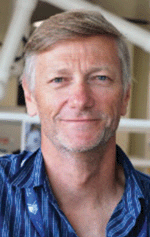
Dr Mark Meekan is a Senior Principal Research Scientist at the Australian Institute of Marine Science based in Perth, Western Australia. He is a fish ecologist, with interests ranging from the early life history of reef fishes to the ecosystem role and function of elasmobranchs. Mark has published over 200 papers in international journals and he currently supervises post-doctoral fellows and PhD students working on shark and reef fish projects throughout the Indian and Pacific oceans. Email: m.meekan@aims.gov.au |

Dr Conrad Speed is a Research Scientist at the Australian Institute of Marine Science and has been working as a tropical reef ecologist, specialising in the movement and behaviour of sharks and predatory fish for the past decade. Conrad has authored numerous papers in international scientific journals, focusing on predatory fish communities and the drivers of their movement. Email: c.speed@aims.gov.au |
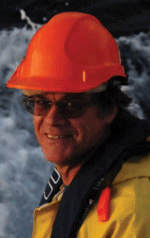
Associate Professor Robert McCauley began his science career in 1987, working in the area of underwater acoustics, receiving his PhD in 2001 from James Cook University. Rob has been working at Curtin University since 1996, developing hardware, techniques and analytical approaches for passive acoustic monitoring and understanding impacts of man-made sound on marine fauna. He has researched impacts of seismic survey air gun sources on animals from plankton to whales. Email: r.mccauley@cmst.curtin.edu.au |
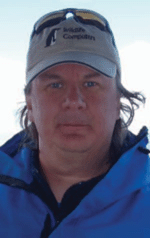
Professor Jayson Semmens is an ecologist/eco-physiologist at the Institute of Marine and Antarctic Studies, University of Tasmania. He specialises in examining the movement, behaviour and physiology of marine invertebrates and fishes using bio-telemetry and biologging approaches. He also developed a physiological approach to examining the potential impact of anthropogenic noise on marine invertebrates. Email: jayson.semmens@utas.edu.au |
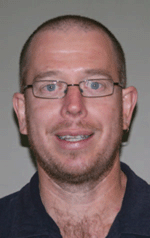
Dr Stephen Newman is a Principal Research Scientist at the Department of Primary Industries and Regional Development based in Perth, Western Australia. He currently leads the demersal fish research group within the Aquatic Science and Resource Assessment Branch. His research has primarily involved investigating the status and assessment of the fish resources of Western Australia. Email: stephen.newman@fish.wa.gov.au |

Rebecca Fisher is a quantitative ecologist with over 15 years of experience in marine ecology and highly developed skills in statistical modelling. Her ecological research focuses on tropical marine ecosystems, where she has contributed to a broad range of topics, including larval performance, survival, growth and dispersal; patterns and drivers in biodiversity; and anthropogenic impacts. Her interests lie in applying quantitative methods to problems in marine ecological research. Email: r.fisher@aims.gov.au |
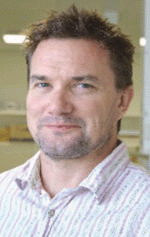
Dr Miles Parsons attained his PhD at the Centre for Marine Science and Technology, Curtin University, in 2010, where he remained as a Research Fellow until December, 2017. He then joined the Australian Institute for Marine Science as a Research Scientist, focusing on underwater acoustics and, in particular, the NWSS research program. Email: m.parsons@aims.gov.au |


